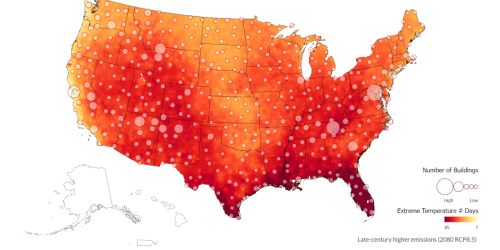Molecules in the atmosphere called organic nitrates are produced through chemical transformations of nitrogen oxides emitted from fossil fuel combustion and industrial activity. The organic nitrates serve as a temporary storage sink for nitrogen oxides, until the molecules are later separated in loss processes and released in the atmosphere. Research has revealed that sunlight can cause this loss reaction, sending nitrogen oxides directly back into the atmosphere, but certain details like the mechanisms driving the reaction and the reaction rate are not fully understood. A new study, supported in part by the Climate Program Office’s Atmospheric Chemistry, Carbon Cycle and Climate (AC4) Program, conducted controlled laboratory experiments to imitate the sunlight-driven reaction that separates organic nitrates, producing different conditions to simulate sunlight throughout the seasons, and to analyze the process and resulting gases. The group of scientists from the Georgia Institute of Technology, University of Colorado, Boulder, and University of California, Irvine, including AC4-supported scientist Nga Lee “Sally” Ng, produced a detailed analysis of the reaction mechanisms and demonstrated how this reaction can quickly lead to the formation of atmospheric ozone. The results of these experiments, published in The Journal of Physical Chemistry A, show that sunlight-driven organic nitrate loss is a significant reaction, and also emphasize the role of organic nitrates in processes that affect air quality and human health. This study was supported by AC4 through an initiative focused on improving our understanding of reactive nitrogen in the atmosphere that leads to pollutants like ozone.
Improved Understanding of the Significance of Organic Nitrates in the Atmosphere for Air Quality











